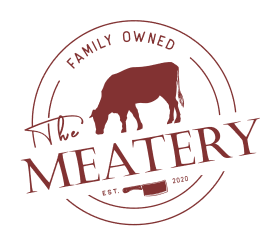When considering whether American Wagyu beef is worth the investment, several factors come into play. The premium price point of American Wagyu - often ranging from $60 to $150 per pound - raises legitimate questions about value. However, the exceptional eating experience it provides often justifies the cost for many consumers.
American Wagyu offers a unique combination of marbling, tenderness, and flavor that sets it apart from conventional beef. The intense marbling creates a buttery texture and rich taste profile that's difficult to achieve with standard beef grades. This superior eating quality makes it particularly appealing for special occasions or when seeking a memorable culinary experience.
Consider these key benefits:
- Enhanced flavor profile due to unique fat distribution
- Exceptional tenderness compared to conventional beef
- Higher nutritional value with beneficial fatty acids
- Prestige factor for special occasions
However, the value proposition depends largely on individual preferences and circumstances. For everyday cooking, traditional beef grades might suffice. But for those seeking an elevated dining experience or working on specialized culinary projects, American Wagyu can be a worthwhile investment. The key is understanding that you're paying for a premium product that delivers specific qualities standard beef cannot match.
History And Origin
The story of American Wagyu begins in the 1970s when the first Japanese Wagyu cattle were imported to the United States. This marked a significant turning point in American beef production, introducing genetics from the legendary Japanese Wagyu bloodlines into American herds.
The initial imports consisted primarily of Black Wagyu (Japanese Black) and Red Wagyu (Japanese Brown) cattle. These animals were strategically crossbred with high-quality American cattle breeds, particularly Angus, creating what we now know as American Wagyu. This crossbreeding program aimed to combine the intense marbling characteristics of Japanese Wagyu with the size and production efficiency of American cattle.
Key historical milestones include:
- 1976: First Wagyu cattle imported to the USA
- 1980s: Development of initial breeding programs
- 1990s: Expansion of American Wagyu production
- 2000s: Establishment of the American Wagyu Association
The development of American Wagyu represents a successful fusion of Japanese breeding expertise with American agricultural practices. Today, American Wagyu has established itself as a distinct category in premium beef production, with dedicated ranchers across the country maintaining various percentages of Wagyu genetics in their herds.
Cooking And Culinary Use
American Wagyu beef requires specific cooking techniques to maximize its unique characteristics. The high level of marbling demands careful temperature control and cooking methods that preserve the meat's exceptional qualities.
Recommended cooking methods include:
- Grilling: Medium-high heat, brief cooking time
- Pan-searing: Cast iron preferred, minimal oil needed
- Sous vide: Precise temperature control
- Broiling: Careful monitoring to prevent overcooking
The key to cooking American Wagyu successfully lies in understanding that less is often more. The meat's natural flavors and fats should be the star. Simple seasonings like salt and pepper are often sufficient, as complex marinades or heavy sauces can overwhelm the beef's natural qualities.
Temperature control is crucial - most experts recommend cooking American Wagyu to no more than medium-rare (130-135°F) to preserve the marbling's buttery texture and prevent the fat from rendering out completely. Allow the meat to rest for 5-10 minutes after cooking to ensure optimal juice distribution.
Is American Wagyu graded?
American Wagyu follows a distinct grading system that differs from both traditional USDA grades and Japanese Wagyu grades. The American Wagyu Association (AWA) has established its own grading parameters, though many producers also utilize USDA grading standards.
The grading structure typically includes:
- USDA Prime Plus (highest conventional grade)
- BMS (Beef Marbling Score) ratings
- Genetic content verification
- Quality certification programs
Most American Wagyu beef grades well above USDA Prime, the highest conventional grade. However, unlike Japanese Wagyu's strict A5-A1 system, American Wagyu grading can vary by producer. Some companies use proprietary grading systems that consider factors such as marbling, color, texture, and firmness.
It's important to note that while American Wagyu consistently grades higher than conventional beef, the grading standards are generally less stringent than those applied to Japanese Wagyu. This reflects the different breeding and production methods used in American Wagyu development.
Marbling And Meat Quality Characteristics
American Wagyu is renowned for its exceptional marbling characteristics, which significantly influence its quality and taste profile. The intramuscular fat distribution creates a distinctive web-like pattern throughout the meat, contributing to its tender texture and rich flavor.
Key quality characteristics include:
- Fine marbling structure throughout the meat
- Soft, buttery texture when cooked
- Complex flavor profile
- Superior moisture retention
The marbling in American Wagyu typically features a more balanced distribution compared to conventional beef. This fat content consists primarily of monounsaturated fats, particularly oleic acid, which contributes to both flavor and potential health benefits. The marbling score often ranges between 6-8 on the BMS scale, though some exceptional cuts can score higher.
The meat also exhibits other desirable characteristics such as excellent color, firm texture, and superior water-holding capacity. These qualities combine to create a premium beef product that offers consistency and reliability in both cooking applications and eating experience.
Differences Between Japanese And American Wagyu
While both Japanese and American Wagyu are premium beef products, several key differences distinguish them. These variations stem from breeding practices, feeding protocols, and production standards.
Key differences include:
- Genetic composition (pure vs. crossbred)
- Feeding and raising methods
- Marbling intensity and pattern
- Price point and availability
Japanese Wagyu represents purebred lineages with strict breeding regulations, while American Wagyu typically results from crossbreeding with Angus cattle. This genetic difference leads to variations in marbling patterns - Japanese Wagyu often shows more intense marbling, while American Wagyu exhibits a balance between marbling and meat texture.
Production methods also differ significantly. Japanese Wagyu adheres to rigorous traditional practices, including specific feed formulations and stress-reduction techniques. American Wagyu production, while still premium, typically follows modified protocols that blend Japanese methods with American farming practices. This results in a unique product that offers many of the desired Wagyu characteristics while maintaining greater accessibility and different price points.









